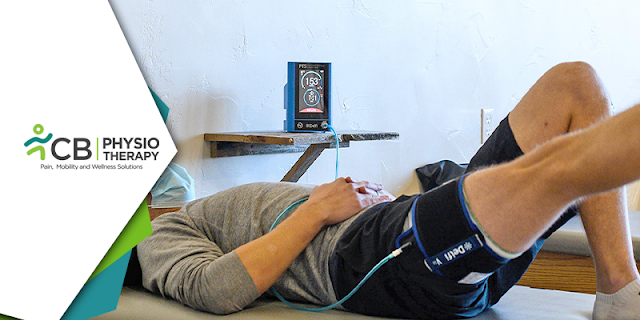Physiotherapy and Fitness | Improve Your Athletic Performance by Carbohydrate Loading
Carbohydrates are the main source of fuel that our body requires while exercising. During Exercise, our body utilizes carbohydrates and fats to produce energy. Higher-intensity exercises need more carbohydrates and thus require carbohydrate loading. Carbohydrate loading is a strategy, used by competitive athletes to improve physical performance. It involves adjusting the diet and activity levels to boost the amount of carbs in our body. If an athlete is exercising at a steady pace and intensity, carbohydrate loading will increase the output by 20%. This means that if an athlete is running 20 miles without exhaustion, carbohydrate loading will increase the output by 4 miles without any exhaustion. Carb loading reduces fatigue by 2-3% for activities longer than 90 minutes, which is a considerable amount in relation to competitive sports. An individual must ensure not to make mistakes by overconsumption of calories that can hinder performance. Thus, it is advisable to consult a physiotherapist to ensure improvement in endurance by helping the athletes keep up their best pace for a longer time. This blog will discuss the guidelines for carb loading, and tips to do it effectively.
CARBOHYDRATE LOADING
Carb loading aims to increase the amount of carbohydrates stored in the muscles used during tough races, training sessions, and other events. It regulates an enzyme (glycogen synthase) that creates muscle fuel (glycogen) and causes the muscles to store higher levels of glycogen. Glycogen is the fuel that helps to generate energy during long-distance events to help maximize performance.
An athlete who is involved in moderate to high intensity for 90 minutes or more like long-distance swimming, marathons, cycling, etc, can benefit from carbohydrate loading.
To achieve this an athlete needs to taper off the training volume 1-4 days before the event and simultaneously increase the amounts of carbohydrate consumption in the days leading up to the game or an event.
GUIDELINES FOR CARB- LOADING
These guidelines should be followed to avoid some mistakes while Carb loading:
- Rest should be taken and work should be reduced before an event.
- As carb loading increases the weight by 2 kg, therefore some athletes might be worried about this weight gain and thus, they don't do carb loading correctly.
- Carb-loading does not give an excuse to eat high-fat foods, an athlete should eat enough carbohydrates and low-fat food.
- Avoid eating too much high-fiber food as it can lead to stomach upset. Cut out fiber and use carbohydrate food like sports drinks, jam, soft drinks, honey, tinned fruit, jelly, and sugar, as these help in prolonging energy levels and maintain sufficient levels of glycogen to allow performance to continue at a high level.
CARBOHYDRATE LOADING STRATEGY
The body needs a lot of fuel to keep going over a long period, events between 60-90 minutes or lower do not need carb loading, but the body needs an extra amount of fuel for longer events, to stave off fatigue and perform at a high level for an extended period.
Most people have enough energy stored to fuel 90-120 minutes of exercise, but for more than this, it is advisable to take supplements to help maintain blood glucose levels and prevent fatigue.
CARBOHYDRATE PLAN
A Carbohydrate loading plan goes hand-in-hand with an exercise plan, as the exercise training is adjusted with the carb intake. The aim is to maximize the body's carbohydrate stores, which will be of most benefit for events longer than 2 hours.
An athlete needs to fill up on carbohydrates. An athlete should consume 8-10kg per kg of body weight per day or 60% of the daily calorie intake from carbohydrates. This equates to approx. 1500kcal and 1800kcal of carbohydrates per day for the average woman and man. An athlete weighing 70kg should consume 700g of carbohydrates daily. These figures are based on the fact that each carbohydrate gram equals four calories. Therefore, for a 70 kg runner during the carbo-loading 2800kcal carbohydrates per day would be recommended.
Also, increase the carbohydrate intake progressively over 5 or 6 smaller meals during the day rather than heavily overindulging with 3 meals only.
Examples of high carbohydrates include wholegrain bread, brown rice, cereals, pasta, and potatoes
- 3 days before the event, the amount of exercise should be reduced. Athletes must go on 3 days of complete rest and must fill up on a lot of carbohydrates during this time to fill up the glycogen stores.
- 3-5 hours before the event, the athlete should aim to top up the carbohydrate stores in the liver. A breakfast meal packed with the right nutrients, e.g., cereals, porridge, bread and jam, honey, or bananas.
- 30-60 minutes before the event consume the final top-up in the form of a gummy bar and energy gel.
- For events longer than 2.5h consume 80-120g carbohydrates per hour. This needs to be done in training as the gut needs to adapt and be trained to handle high amounts of carbohydrates while exercising.
- After the event, provide the body with both protein and carbohydrates to recover and also replenish the carbohydrate stores.
- Carbohydrate loading intake will depend on the kind of sport an individual plays and the kind of training the athlete receives for it.
An athlete can feel indigestion, bloated, and constipation because the intestines are filled up with carbs. To hold so many carbohydrates and glycogen in the body, water is required. So, feeling heavier than usual is normal.

